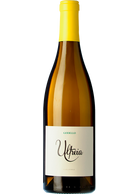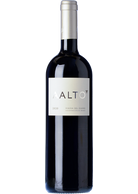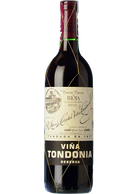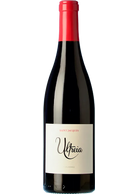Wine from Spain
Spain is the third largest producer of wine in the world and the second oldest winemaking country in western Europe. Over 10,000 wineries offer an extremely wide range of different wines thanks to the distinct characteristics of climate and soils in each of its many wine regions.


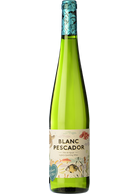

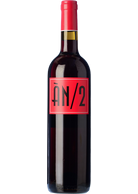
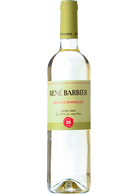

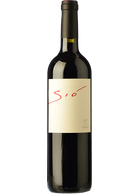

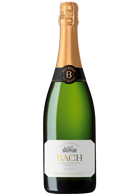
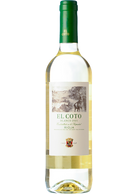
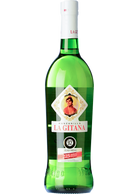
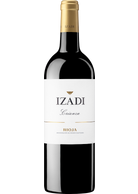
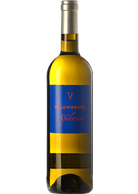
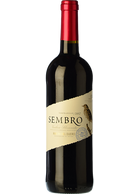

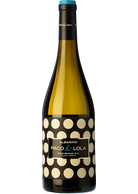



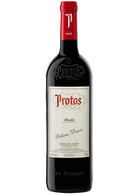
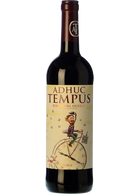
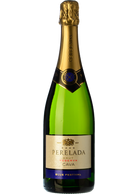
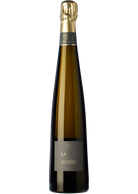




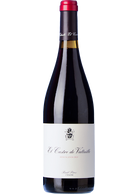
Spain
Spain is the third largest producer of wine in the world and the second oldest winemaking country in western Europe. Over 10,000 wineries offer an extremely wide range of different wines thanks to the distinct characteristics of climate and soils in each of its many wine regions.
MAIN APPELLATIONS
- Rioja; Rioja DOC is the most renowned appellation in Spain. Its classic style of red wines, normally created from Tempranillo and a long ageing process in wooden barrels, are known and loved around the world for their elegance. It is also home to splendid Crianza whites and delicate rosés.
- Ribera del Duero; although winemaking in the area goes back many centuries, the official Ribera del Duero DO is one of the younger appellations. Mature, full-bodied red wines, aged to obtain sweet and spicy notes, are what many consider the perfect example of what a red wine should be.
- Priorat; power and history meet in Priorat DOQ. Red wines created from traditional grapes such as Grenache and Carignan, occasionally accompanied by small amounts of French varieties.
- Toro; the Toro DO region produces some of the most forceful red wines in Spain using the Tinta de Toro grape, an adaptation of Tempranillo to the local climate. Strong and colourful wines which are becoming more and more elegant with every vintage.
- Jumilla; the Jumilla DO appellation, in south-eastern Spain, is home to mature and juicy red wines made with Monastrell grapes.
- Montsant; Montsant DO is the neighbouring region of the more well-known Priorat DOQ and produces similar wines but more immediate and easy to interpret by any wine-lover.
- Bierzo; the Bierzo DO region owes its success to excellent fruity and aromatic red wines made using Mencia grapes. Wines which work well both young and aged.
- Penedes; one of the most restless and diverse wine making regions in Spain, Penedes DO is home to almost all kinds of wine, ranging from fruity whites or Crianza whites to light red wines or reds for laying down. Many wines are made with French varieties whereas those made from historic local varieties display a very personal character.
- Rías Baixas; the Rías Baixas DO is virtually synonymous with its star grape, the Albariño variety. Fresh and fruity wines which pair wonderfully with fish dishes and shellfish.
- Rueda; neighbouring on Ribera del Duero, the Rueda DO is home to splendid white wines based on Verdejo, a variety capable of creating fruity and herbal wines which delight anyone who tries them.
- Terra Alta; the Terra Alta DO appellation in southern Catalonia is home to Grenache Blanc. Single-varietal white wines expressing an extremely high degree of typicity. Mediterranean and fruity, yet also fresh and seductive wines.
- Valdeorras; Valdeorras DO is located in inland Galicia. Stony soils and a continental climate make it the perfect location for Godello vines, which are used to create wonderfully delicate wines with a splendidly floral elegance.
- Somontano; Somontano DO is the most renowned appellation in Aragon. International varieties thrive in the contrasting climates the area offers.
- Jeréz; the Jerez DO appellation in the south of Spain is a historic region famous for a range of fortified wines. From Fino and Manzanilla sherries to the sweeter Pedro Ximénez, as well as the fascinating Olorosos and Amontillados.
- Cava; the Cava DO label is a synonym of good quality, affordable sparkling wines. A variety of styles range from classic Cavas with nutty aromas to modern drinks with more fruity aromas and toasted hints.
RED GRAPES
- Tempranillo (also known as Tinta Fina, Tinta del Pais, Cencibel, Ull de Llebre); over 200,000 hectares. Authorized variety in almost all the autonomous communities of Spain. Plentiful in Castile La Mancha, Castile and Leon, and La Rioja. Principally used for Crianza and Reserva wines. Intense colour, medium acidity and strength. Aromatic wines which work well with wood.
- Grenache; 60,000 hectares. Cultivated in 14 autonomous communities, particularly in Castile La Mancha and Aragon with a significant presence in Navarre, Catalonia and Madrid too. A sweet fine-skinned grape, used for red and rosés as well as sweet dessert wines. Relatively strong wines but with little tannicity and acidity.
- Bobal; 60,000 hectares, divided between Castile La Mancha (60%) and Valencia (40%). Intensely-coloured wines. Short ageing processes maintain their colour and aromas. Well-structured and finely-balanced with a measure acidity.
- Monastrell (Mourvèdre, Garrut, Mataro); 40,000 hectares. Principally found in Murcia, Castile La Mancha and Valencia. Strong, colourful wines with medium to low acidity and plentiful tannins.
- Mencia; 8,500 hectares split between Castile and Leon (65%) and Galicia (35%). Fruity and aromatic wines with a measured acidity. Suited for short ageing processes.
- Carignan (Mazuelo); 5,600 hectares, mainly in Catalonia (40%). Tannic and acidic, it is often used to blend with Grenache. Strong and colourful. Herbal and animal aromas which are more amiable and complex with grapes from older low-yield vines.
WHITE GRAPES:
- Viura (Macabeo); 54,000 hectares, divided principally between Castile La Mancha (39%), Catalonia (20%) and Extremadura (12%). A key grape also for Cava production and many Rioja white wines.
- Verdejo; 22,500 hectares mainly located in Castile and Leon (61%) and Castile La Mancha (31%). Fruity and herbal wines from the variety’s birthplace and heartland in the Rueda DO appellation are deservedly famous around the world.
- Xarel·lo (Pansa Blanca, Cartoixa); 15,000 hectares of vineyards in Catalonia. It is one of the three traditional varieties used for making Cava, and it is also shows a wonderful capacity for creating serene white wines. Fresh, full-bodied wines which express the character of their terroir.
- Albariño; 6,300 hectares mainly found in Galicia. Aromatic and fresh wines, fruity when young and gaining elegance and more complex fragrances as they age.
- Grenache Blanc (Lledoner Blanc); 2,700 hectares, mainly in Catalonia (75%) and especially in the DO Terra Alta region. Extremely versatile wines, with a good body and aromas. They work well with wood.
- Godello; 1,100 hectares, 95% in Galicia. Its freshness and fragrance make it a variety loved by anyone who has tried it.
CLASSIFICATION SYSTEM
- Vinos de Pagos (VP). Prestigious wines from a single vineyard or estate (‘pago’) whose unique characteristics and micro-climate mean it stands out from surrounding winemaking lands.
- Denominación de Origen Calificada (DOCa). The highest category for wine regions awarded to areas which have been classified as a Denominación de Origen (protected designation of origin label) for at least 10 years and whose wine is processed and commercialized only by registered wineries located within the designated area following strict quality and quantity regulations. Rioja and Priorat.
- Denominación de Origen (DO). The Designation of Origin classification is designed to protect wines from specific areas which have been produced using grapes from this appellation and which must also enjoy a certain level of commercial prestige as well as having been classified as Vinos de Calidad con Indicación Geográfica for at least 5 years.
- Vinos de Calidad con Indicación Geográfica (VC). The Quality Wine with Geographic Indication label means a wine has been produced in a specific region only using grapes from there. All the production and ageing process must also take place in the same area.
- Vino de la Tierra. This label indicates wines are from a region with specific environmental or cultivation characteristics which give the wine a special profile. A less- demanding lower rank to the DO classifications, but they usually state the vintage and grape varieties used.
- Vinos de Mesa. ‘Table wines’ is the catch-all designation for wines which do not fall within the stricter classification systems. They do not need to state the vintage, origin, or grape varieties on the label.
ORIGIN OF WINE
The first wine was made here in Andalusia around 1,100 BC by Phoenicians who decided to produce their own wine rather than simply importing it from the area we know as the Middle East as they had been doing until then. Centuries later, Moorish invasions brought the wine trade to a halt but it was eventually restarted on a large scale when the colonization of the American continent opened up new export markets.
The first wines produced were sweet ones or mature ‘rancio’ wines, strongly oxidized and very powerful, as this was the only way they knew how to keep wines back then. By the end of the 15th century, wooden barrels were replacing clay jars and leather was also being used to store and transport wine. The 16th and 17th centuries saw production become widespread around Spain using methods quite similar to those still in use today.
Modern winemaking techniques from Bordeaux were introduced into Rioja in 1850, and a century later stainless steel tanks were first used. The end of the 19th century saw the terrible phylloxera plague devastate vineyards of France, which led to a huge demand for Spanish wine, but eventually the plague spread south and had similar consequences for Spanish vines.
When Spanish winemakers finally began to recover from the plague, modern production techniques and know-how became the order of the day both in the vineyards and in the winery itself. Today, Spain offers an incredibly diverse variety of quality wines ranging from traditional ones using local varieties to wines with a more international profile created from French varieties which do extremely well south of the Pyrenees too.
CLIMATES
Broadly speaking, the climate in Spain can be divided into 6 types:
· Oceanic climate in the north (Cantabria and the southern Pyrenees); plentiful rain and mild temperatures all year round.
· Mediterranean climate on the east coast; low rainfall, high temperatures in summer, mild in winter.
· Continental climate in central Spain (central plains and Ebro valley); cooler in general with low winter temperatures. Summer storms with heavy rainfall.
· Semi-arid climate in south-east Spain and parts of the Ebro valley; very high temperatures and extremely low rainfall.
· Mountain climates at altitudes in mountain ranges; abundant rainfall and low temperatures.
· Subtropical climate in the Canary Islands; mild temperatures all year round and very low rainfall.
SOILS
- Chalky-clay: Rioja Alavesa, Rioja Alta, Ribera del Duero, Jumilla, Jerez. Elegant wines with mineral hints of chalk and a clear varietal expression. Volume and balanced tannins.
- Sandy: Galicia, Mentrida and Madrid. Needs little water. Sharp varietal expression, balanced acidity, and rich in minerality. Measured strength.
- Stony soils: Toro, Conca de Barbera, Terra Alta, Rueda and Rioja Oriental. Well-drained land. Pale-coloured stones and pebbles reflect sunlight and regulate the vines’ temperature. Mature wines with earthy hints and an intense colour.
- Slate: Priorat, Arribes del Duero, Ribeira Sacra, Bierzo, Tenerife and Emporda. Scarce amount of organic material. The slate reflects sunlight. Complex, powerful and mineral wines, with almost toasted aromas.
- Volcanic soils: Canary Islands. Aromas of ash and smoke. Iodine and herbal notes.
